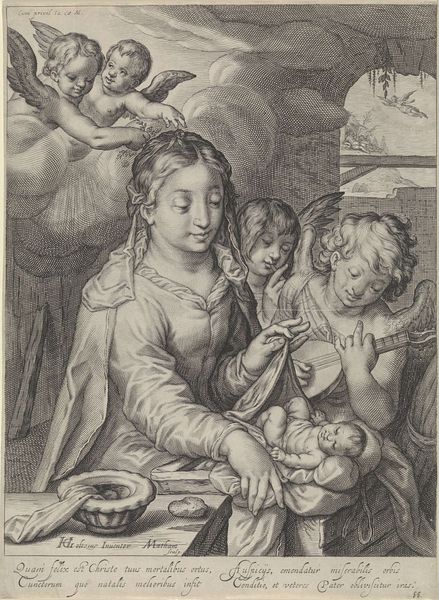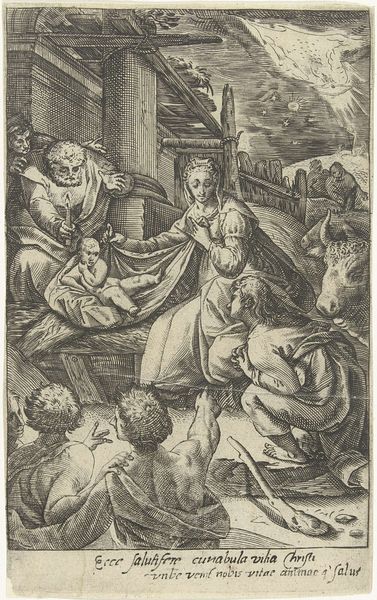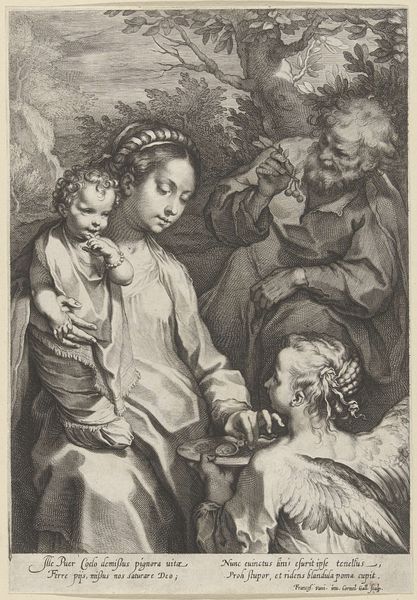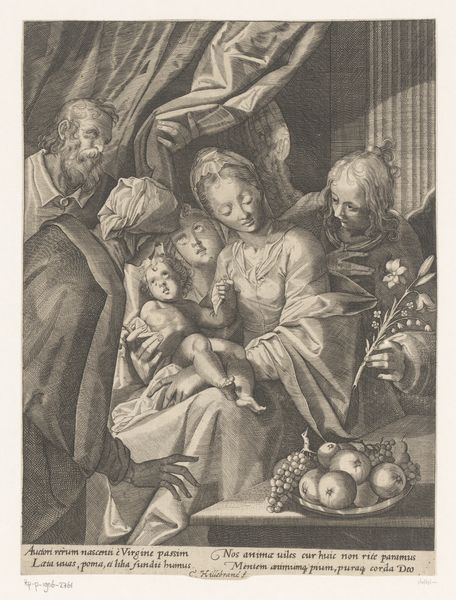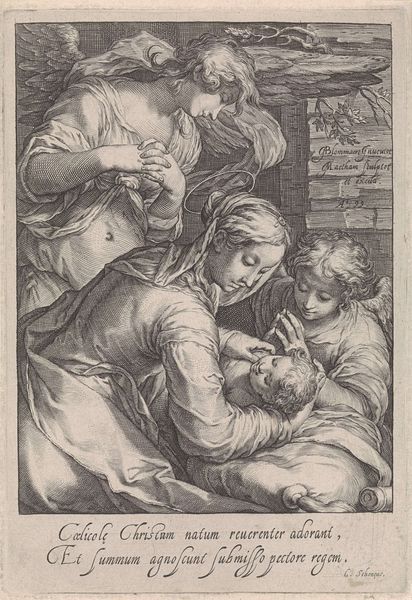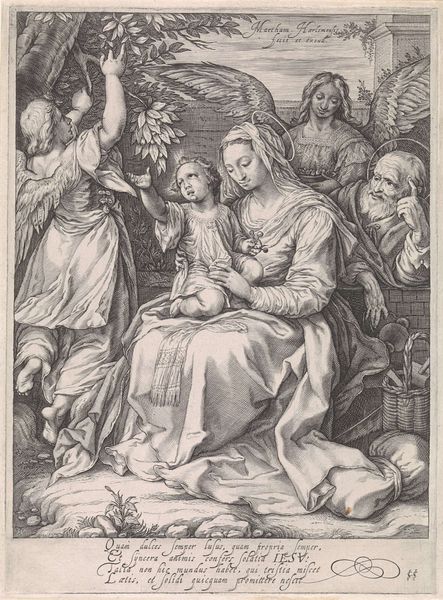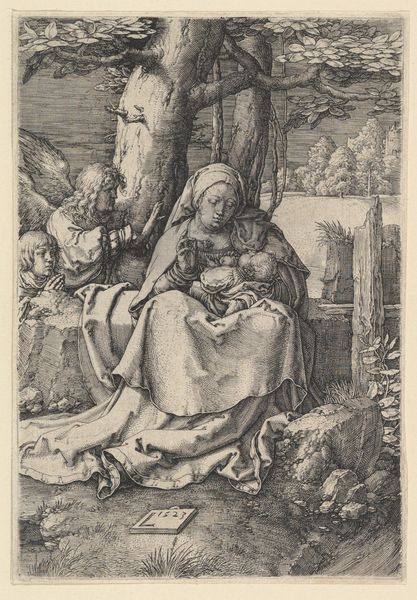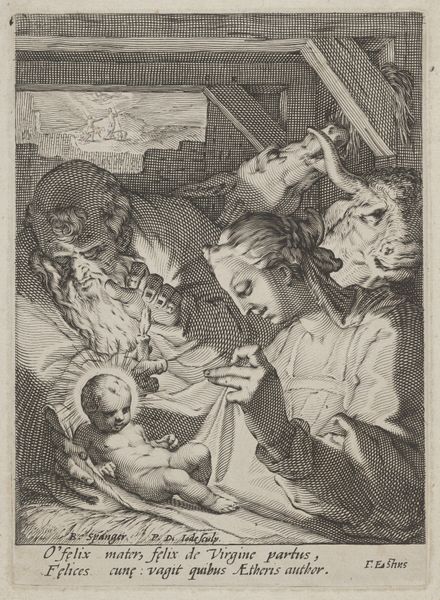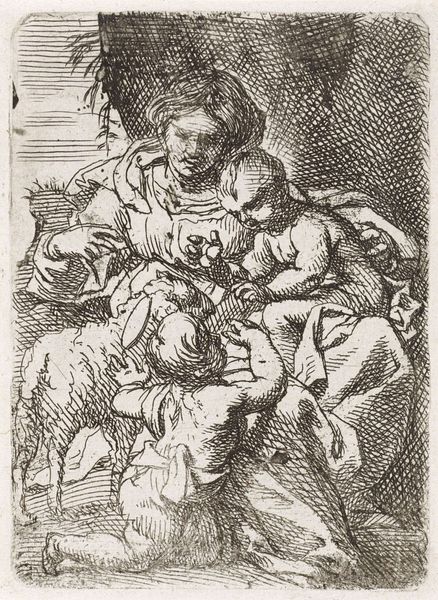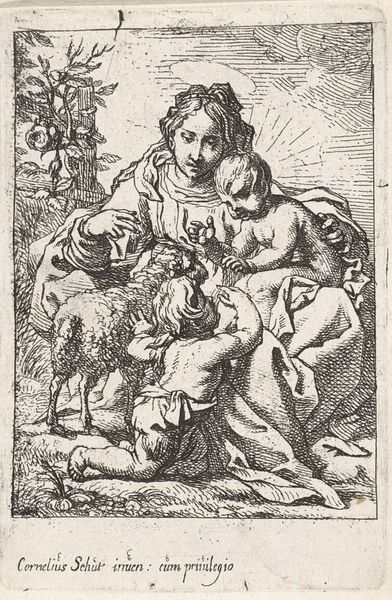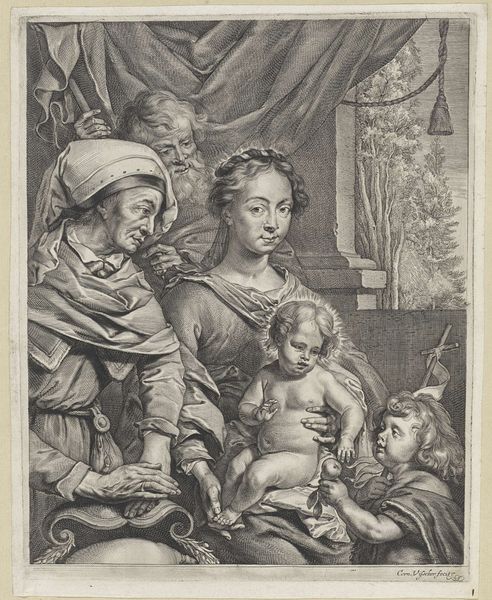
print, engraving
# print
#
figuration
#
northern-renaissance
#
engraving
Dimensions: height 268 mm, width 190 mm
Copyright: Rijks Museum: Open Domain
Editor: We're looking at "Maria geeft het Kind te eten," or "Mary Feeding the Child," an engraving dating from 1586 to 1612. The texture achieved through engraving gives it such striking detail. What particularly catches your eye when you look at this print? Curator: Initially, the strategic arrangement of light and shadow captivates. Observe the sharp contrasts that delineate the figures, particularly how light emphasizes the folds in Mary’s drapery and models the infant Christ’s form, set against the textured backdrop. How does the contrast impact the composition? Editor: It gives it depth. The characters in light almost pop out of the dark background, which adds drama to an otherwise calm setting. Is the angel serving the plate essential to this? Curator: The angel serves a dual compositional role. Its form leads the eye, in a descending diagonal, from Joseph in the upper left towards Mary and Christ. Furthermore, notice how the angel’s downward glance mirrors Mary’s gaze, directing our attention to the plate. This mirroring reinforces the spatial cohesion of the depicted scene, marrying narrative to geometry. Does that visual cohesion impact your view? Editor: It certainly creates a unified scene despite having four separate figures. I initially perceived each individually, but now they clearly fit together, directing the viewer through their careful placement. Thank you. Curator: The work serves as an exercise in compositional analysis. Appreciating the placement of objects and the mirroring within it allows us to more fully understand and engage with this image.
Comments
No comments
Be the first to comment and join the conversation on the ultimate creative platform.
